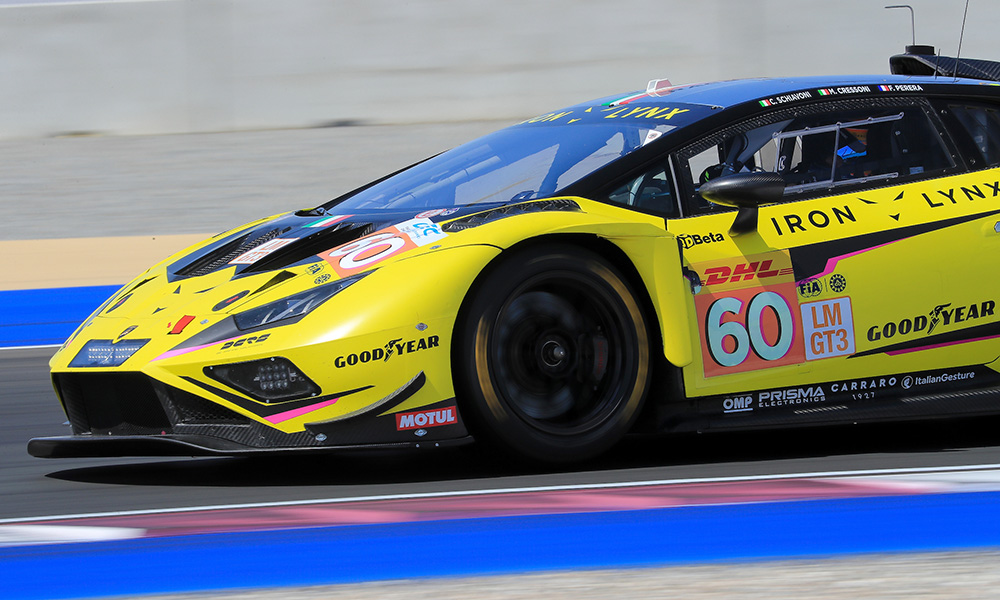
Photo: MPS Agency
Management figures from several manufacturers are unconvinced about the wider implementation of GT3 torque sensors, with cost control cited as a major concern.
The FIA-mandated sensors made its debut on GT3 cars in the recent FIA World Endurance Championship season opener at Qatar’s Lusail International Circuit, having already been implemented in the Hypercar class since 2021.
The sensors are installed on the driveshafts of each of the 18 cars in the new-for-2024 class, with the goal of measuring and better controlling the power allocated under the series’ Balance of Performance parameters.
It is set to be implemented in the LMGT3 class of the European Le Mans Series this year as well, while IMSA has signaled plans to also use torque sensors in both its GTD Pro and GTD categories beginning in 2025.
Senior industry figures have praised the system for its capacity to efficiently balance out the performance between different types of engines and cars, but are fearful of its wider use in additional GT3 championships.
This is because of the significant costs involved, with Sportscar365 understanding that the price tag sitting around $60-80,000 USD and teams needing to purchase multiple units per car.
“This is a little bit of a risk,” said Lamborghini chief technical officer Rouven Mohr.
“I’m a big fan of the torque sensors because this is the only possibility to have find the right Balance of Performance from the engine power side, especially if you want to balance naturally aspirated engines with turbo engines and so on.
“Therefore, from my point of view in the engine perspective, I appreciate it a lot.
“But we see already overall, and not only related to this fact, for sure in the GT3 category, an absolute increase in professionalism with the consequence that also an increase in costs.
Lamborghini motorsport boss Giorgio Sanna added: “This is something that’s very expensive and this is something we have to manage because all together, manufacturers and promoters and teams, we have to take care of the increase of the coats and avoid that GT3 in a few years will become something like it was in GTE.”
Other manufacturers expressed different views, with GM’s sports car racing program manager Laura Wontrop Klauser saying that “it comes with a little bit of a price tag, but that’s just how this works,” further adding: “you don’t get anything for free.”
Her counterpart from BMW, motorsport director Andreas Roos, meanwhile took a more definitive standpoint in saying he doesn’t believe the sensors should be implemented in all GT3 series.
“To have this in a customer racing championship, what normally a GT3 car is, it’s in my opinion the wrong way, because it’s a very expensive sensor,” Roos said.
“It just generates extra effort and extra money on the team side, on the manufacturer side, and the costs.
“So at the end, I can see why it is in here, in the WEC, in LMGT3, but I don’t see this as a possibility globally in GT3. It’s for me not a solution.”
Roos added: “I can just clearly warn, we can’t take this as the new standard for GT3 racing.
“That’s not possible and we can’t do something like this. Because this would at the end risk that a lot of customer cars could [leave], because it’s just not possible to handle it.
“We have to be careful that GT3 not becomes, let’s say, too much factory-driven.”
In response to the stated concerns, an FIA spokesperson told Sportscar365 that “the cost of torque sensors is mitigated by the exemption of engine performance tests which were previously mandatory in the homologation process.”
This is in reference to dyno testing that took place for GTE cars in order to define restrictor sizes or boost levels as part of establishing BoP parameters, which the FIA states is no longer necessary as a result of the introduction of the torque sensors.
Furthermore, the FIA is also responsible for carrying part of the costs involved as additional resources, including an increase in personnel, that are required to manage and operate the sensors.
Tom Ferrier, team principal of Corvette LMGT3 squad TF Sport, equally praised the benefits of the system but added that “it would be lovely if there was a cheaper way of doing it.”
The Brit, for his part, pointed to a different concern: the failure of sensors during a race.
Hypercar squad Toyota Gazoo Racing encountered a similar problem during last year’s 6 Hours of Portimao, which resulted in a black and orange flag that cost the team seven laps as it needed to replace a driveshaft.
“That’s more of a fear for me,” Ferrier told Sportscar365.
“I think when you look at Hypercar, they have it as factory funded teams. When you start doing it as customer racing, there’s gentlemen drivers paying for it to have to effectively end their race, because that’s what it is when you’ve got to change a driveshaft.
“Is there a better way or is there a backup we could have or something to avoid that happening? We’ve raised that concern. Let’s see what the feedback is on that.”
John Dagys contributed to this report
This story was updated on Friday, March 15 at 1:45 p.m EDT (6:45 p.m. CET) to include comments issued by the FIA.

























